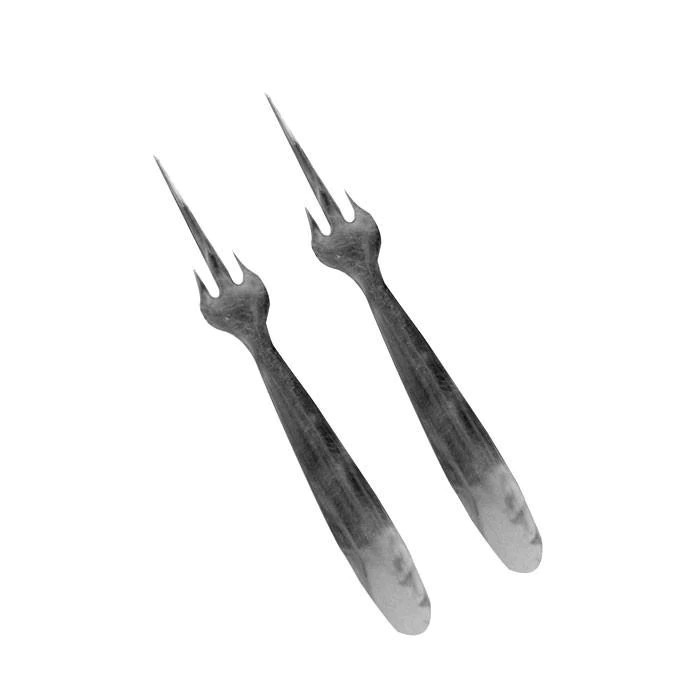The Steampunk Aesthetic is based largely on the design features of the Victorian Era, when use of decoration was foremost. However, I like to think of the Steampunk Aesthetic as “fancier than it needs to be to be functional”.
While many Victorian/Steampunk items are fancier than they need to be, this concept is perhaps demonstrated most clearly in the design, decoration, and alleged function of Victorian silver.
In our more utilitarian times, tableware generally consists of a fork, a knife, and a spoon, maybe with a salad fork, soup spoon, or teaspoon added on if the dinner is fancier. And these utensils pretty much take care of all our needs.
However in the later part of the Victorian Era, the co-called Gilded Age, there was an explosion of various tableware and serving pieces each one specialized and required for each course, or sometimes, even each type of food on the plate. And each one was deemed essential for the proper table.
Today we would use a knife and form to serve and eat fish. However, the fish fork was designed to be optimized for the task. The fish fork’s leftmost tine was longer than the rest and sported a notch. These features were meant to simplify removing the fish’s bones and skin. Although I wonder how much easier this task became, and how much one was supposed to merely ogle at the hostess’s fancy silverware.
The variety of forks increased over time to include (beside the modern dinner and salad forks) luncheon forks, dessert forks, pastry forks, oyster forks, berry forks and ice-cream forks. All deemed crucial for using at fancy meals.
It’s really with the serving pieces that the wide diversity of forms reached its zenith. Let’s start with the asparagus tongs, below.
I like these because the rectangular design is so unusual in flatware. There are some more usually shaped asparagus tongs, but they all allow serving the exotic asparagus spears without causing a mess.

The dangerous-looking utensil shown below is a cucumber server, although it can sometimes also used to serve tomatoes as well. The tines make it look like a spork turned 90 degrees, but I could not find the rationale for the tines. Perhaps they are only to ensure the cucumber slices don’t fall off while serving.

The fish server below consists of a wide fork and knife which are used to slice a piece from a larger fish and deliver it to the diner’s plate. The width, I assume, is to prevent the fish from separating while being transferred to the place. I suppose this serves the same function as a spatula would today, just with more style.

Desserts had their own assortment of specialized tableware. The bonbon scoop (below) seems to have been used to serve chocolate-covered goodies without untoward stickiness. The ice cream server looks more like it’s made for slicing than scooping, although there are period designs that are concave as well. In any case, the design is very different than the ice cream scoop of today.
Finally, there is the mango fork. This bizarre three-tined fork is inserted at the end of the mango and while holding the fork, the flesh is cut away. It’s a very elegant way of saying, “I’m not only rich enough to afford exotic tropical fruit, but also the specialized tableware with which to eat it.



Obviously, very few working-class or even middle-class homes would have been equipped with any of these fancy utensils. Not when a knife, fork, and spoon will do the work just fine. Their main function was as a display of conspicuous consumption–to demonstrate that you are rich enough to possess the latest and most stylish tableware to impress your equally gilded friends.
So, although fancy silverware may satisfy the Steampunk “fancier than it needs to be to be functional”, I think iit exaggerates its functionality when one of its main functions is to impress.

imagine cooking with this haha (why not :o)
LikeLike